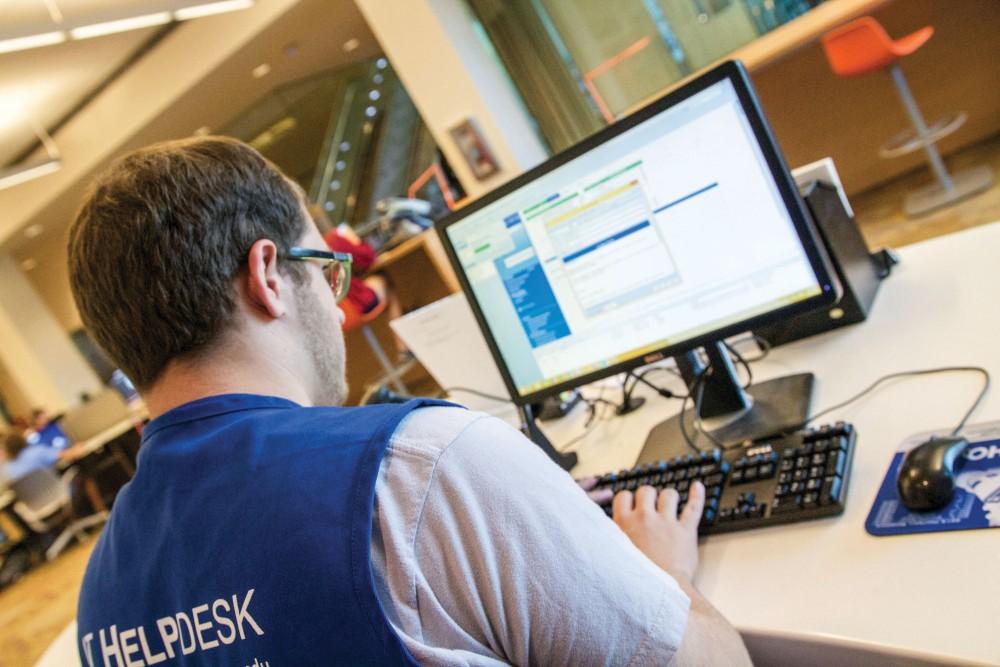Fighting a new wave of attacks

GVL / Sara Carte – IT Help Desk worker Grant Miller works on his computer to help students in the Mary Idema Pew Library on Wednesday, Sept. 23, 2015.
Feb 13, 2017
A new digital age brings about its own unique problems. There are countless innovations coming out every year for the better and for the worse. Cyberattacks online, for example, can come in the form of phishing emails or malware trying to take over a computer.
To combat virtual dangers such as cyberattacks, a new concentration in cybersecurity has been added to Grand Valley State University’s School of Computing and Information Systems (CIS) master’s degree program.
“Online security is really important after the election since a lot of cyberattacks and email attacks are happening,” said Vijay Bhuse, a GVSU CIS professor who will help implement the new program changes. “These attacks are bad for everyone, so I strongly agree with strengthening the curriculum so our graduates are prepared.”
Bhuse warned this is just the beginning. He said there might be bad attacks in the future since everything from electronic hospital records to bank account information is online.
To combat the new era of hackers, Bhuse and his colleagues have added four CIS classes. The purpose of the classes is to improve students’ knowledge of what hackers are trying to do, Bhuse said. Students will learn about digital forensics, writing secure code and more.
Sue Korzinek, the director of information technology at GVSU, is very familiar with trying to be safe online. She said within the last six months, more and more online attacks are happening. To make sure GVSU computers are safe, Korzinek has added 40 percent more people to her IT department. She hopes with the new members, GVSU’s computers will be watched more closely.
“Our goal is to educate people so they’re aware of what they can do to help,” Korzinek said. “This will help us better protect GV’s assets and the personal information of people here as well.”
Korzinek and Bhuse agree students should use different passwords for their social media, school and personal accounts to stay safe online.
Korzinek said phishing emails are emails designed to look professional. She said the goal with these emails is to send students to a link that will either request their personal information or download a virus on the computer.
“Be wary of URLs that say ‘click here,’” Korzinek said. “GV emails will have ‘gvsu.edu’ in them.”
Korzinek’s department can spot if a computer from a certain location has tried to log in to someone’s account multiple times. This is why Captcha was implemented on GVSU’s website, she said. Also, if someone’s direct deposit has been changed to go into a different account, the department will email the student about it first.
The days of physical robberies and theft are still present but, as everything seems to move online, so do attackers. While GVSU is adding cybersecurity to its curriculum and increasing its IT staff to combat these dangers, students can also increase their safety online by being wary of how they use the internet. As Korzinek advised, “think before you click.”






















